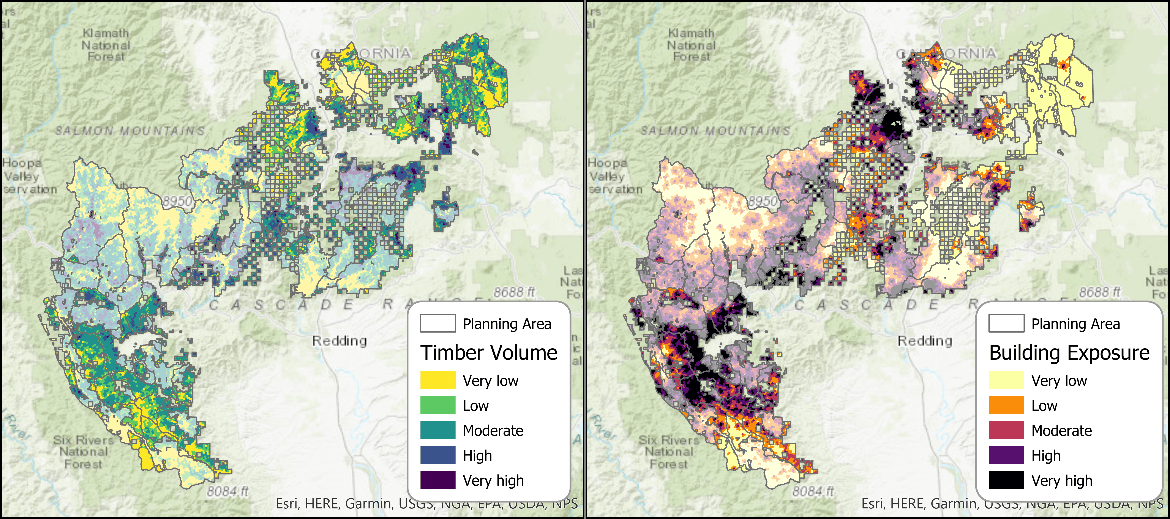
October 23, 2023
Getting started with scenario planning and ForSys
ForSys requires a stand-level geospatial dataset (shapefile or feature class depending on the version of ForSys) with all metrics attributed to polygons. The following lists the type of information typically required for a ForSys run and a brief overview of a typical ForSys workflow.
Stand layer shapefile
A stand layer shapefile is required to represent treatment decision units. This can be a shapefile or feature class depending on ForSys version. For raster data, see notes below. Required fields:
- Unique standID (integer)
- X,Y centroids (only if you do not have predefined planning areas – see below)
- Area in acres or hectares
Set availability
Identify stands that are administratively available for treatment using the forest plan or other management document. Planning areas typically contain areas that are not available for mechanical treatments according to management guidelines. ForSysX requires an integer ‘Availability’ field to indicate which stands are available using a 1 to indicate available and zero not available.
Identify priorities
Typically priorities for treatment come from various assessments. Priorities need to be quantitative variables. If they are qualitative, they are used as constraints as indicated below.
Identify outcomes from treatments
For instance, if you conduct a thinning there is thinning volume and a change in the fuel model and activity fuels that need to be treated with subsequent treatments. For many variables the outcome is a treated acre of the various undesirable conditions, for instance acres of high wildfire risk treated, acres of ecological departure reduced, etc.
Are there pre-defined planning areas?
Often scenarios require prioritizing treatment within pre-defined management or ecological areas such as PODs, subwatersheds or firesheds. These are defined in the input dataset.
- If yes, then add this field as a unique ID. IDs must be an integer for ForSysX to be available in the ‘Subunit’ drop down box. In ForSysR the proj_id_field parameter idenfies the planning area with no data type requirements.
- If no, then the program is used to build optimized planning areas based on the objectives for a particular run. This process requires XY centroid locations in the shapefile with ForSysX. Adjacency is calculated within the program.
Treatment thresholds
Are there treatment thresholds meaning a condition that needs to be met to trigger treatment? Typically these are minimum stand volumes, stand density index, estimated fire behavior, slope, distance to road etc.
- If yes, then add a new field to your database with the average stand values for the threshold
Treatment type
What types of treatments are you modeling? Thinning, underburning, pile burning, etc.
Amount of area treated per project
What is the maximum treatment area per project, percentage or absolute area? If not known it can be determined running multiple scenarios.
Variability in management goals across the landscape
Does the area of concern require completely different scenarios based on management objectives and operational constraints? If yes then each sub area is set up as a different problem and ForSys is run with “Zones”

How does ForSys handle raster data?
We have an ArcPro tool that can convert raster data to a polygon feature class, and then attribute this created stand layer with any raster data of interest. This will create a ForSys input dataset.
Which version of ForSys should I use?

How do I get help?
Help with the ForSysR version is handled by submitting the issue as a github “issue” within the ForSysR repository. Help with the ForSysX version is available upon request.
Are there published studies that can be referenced?
To date we have 27 published case studies using ForSys. These are available on request or at https://github.com/forsys-sp/forsysr/blob/main/docs/ForSys_CaseStudies_2022.pdf.



.png)
